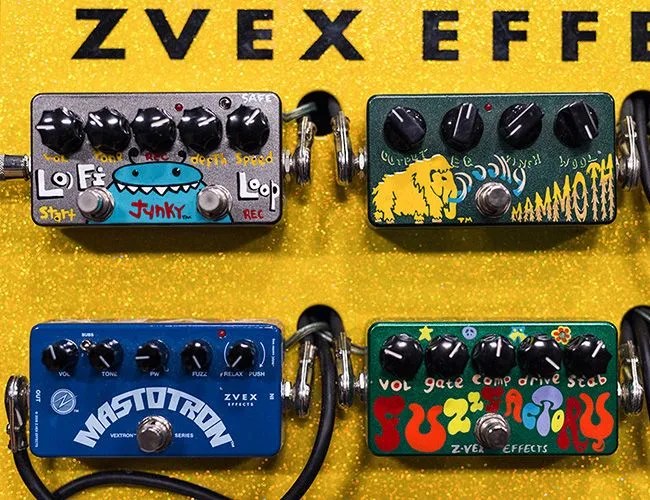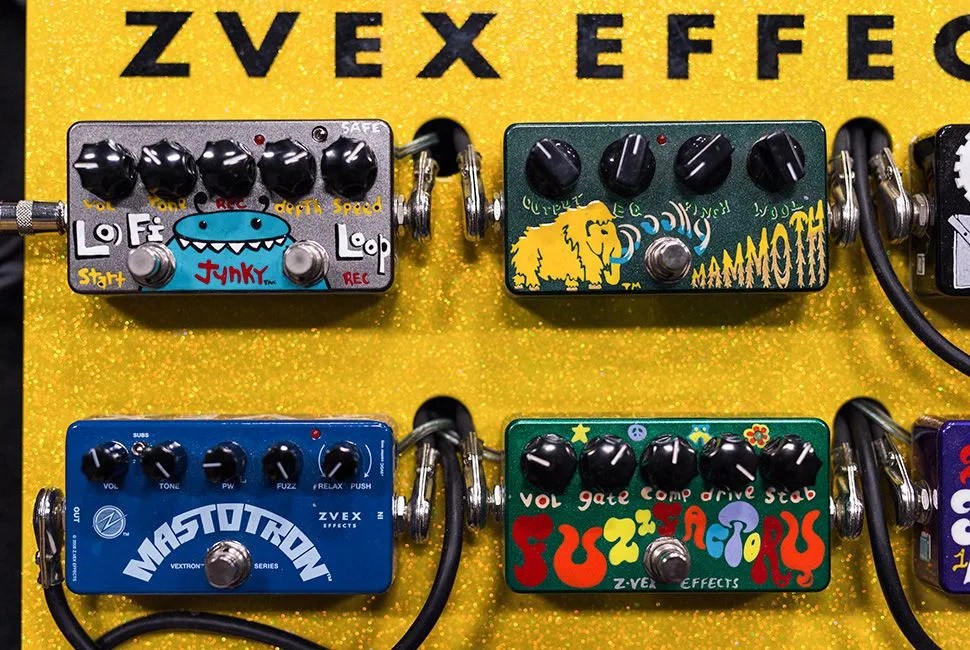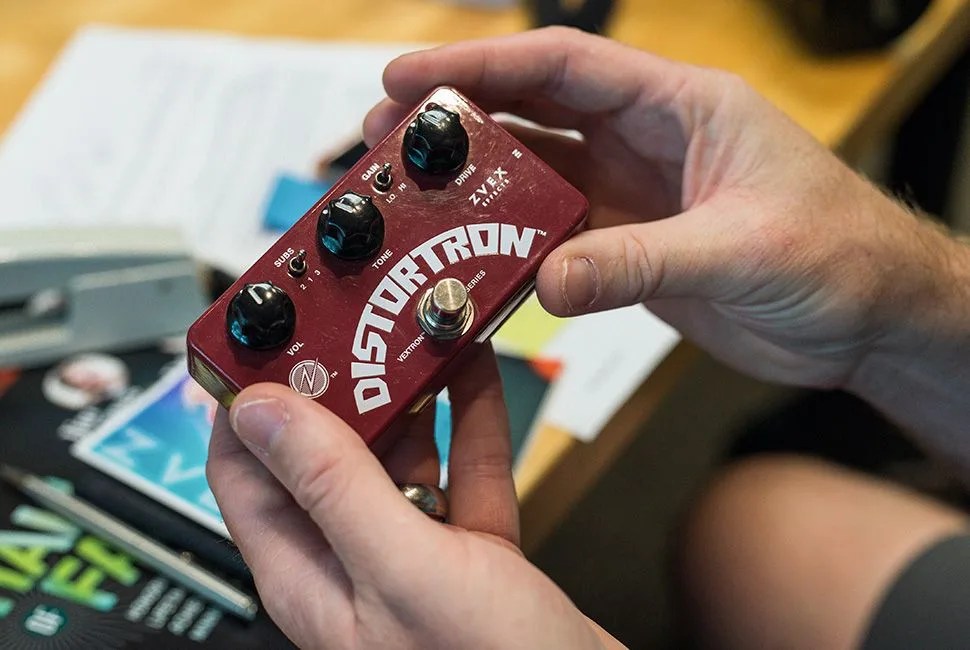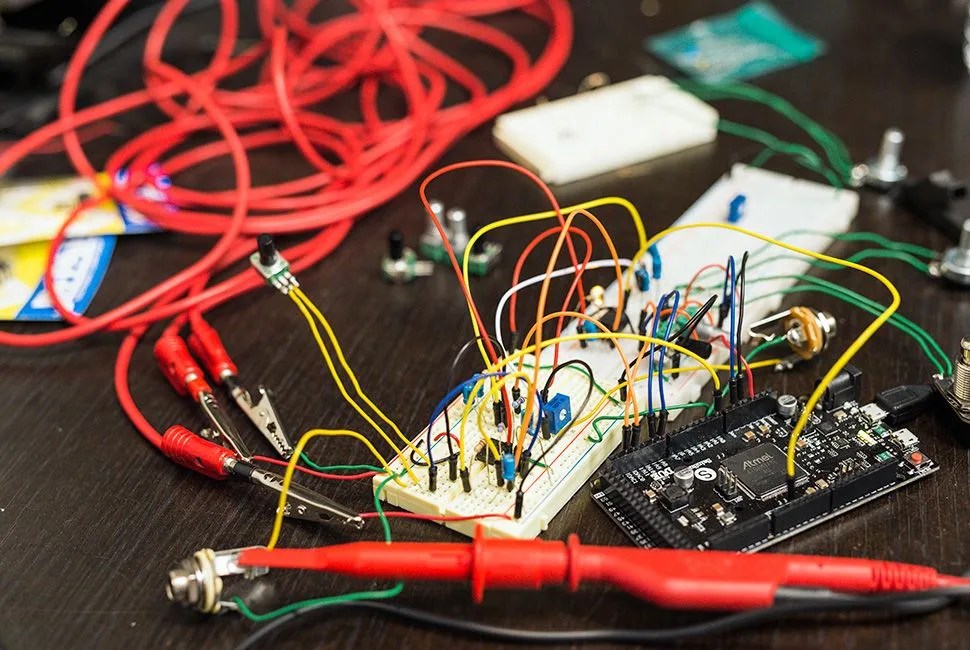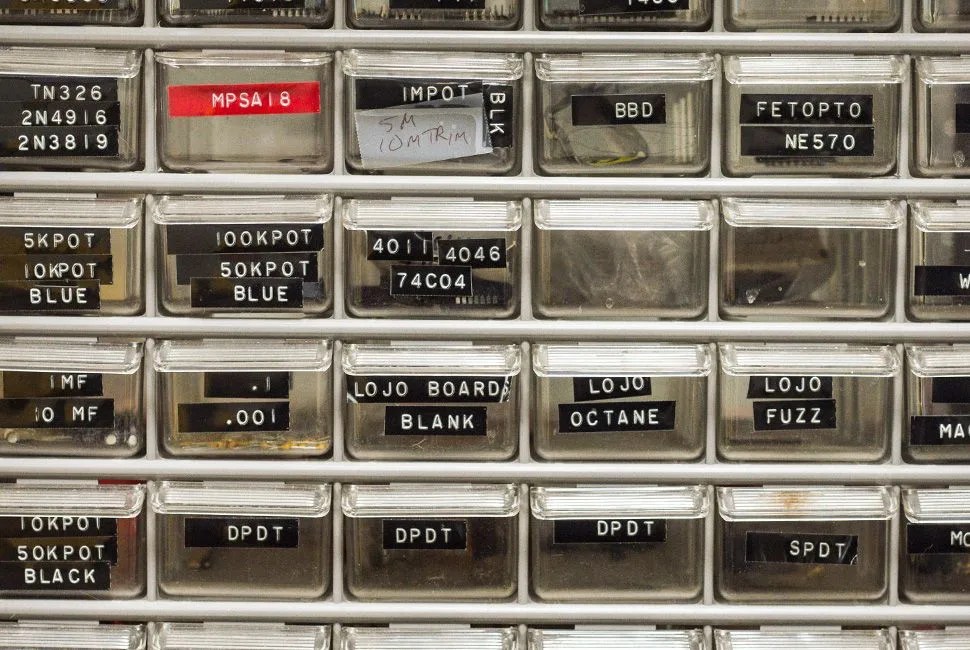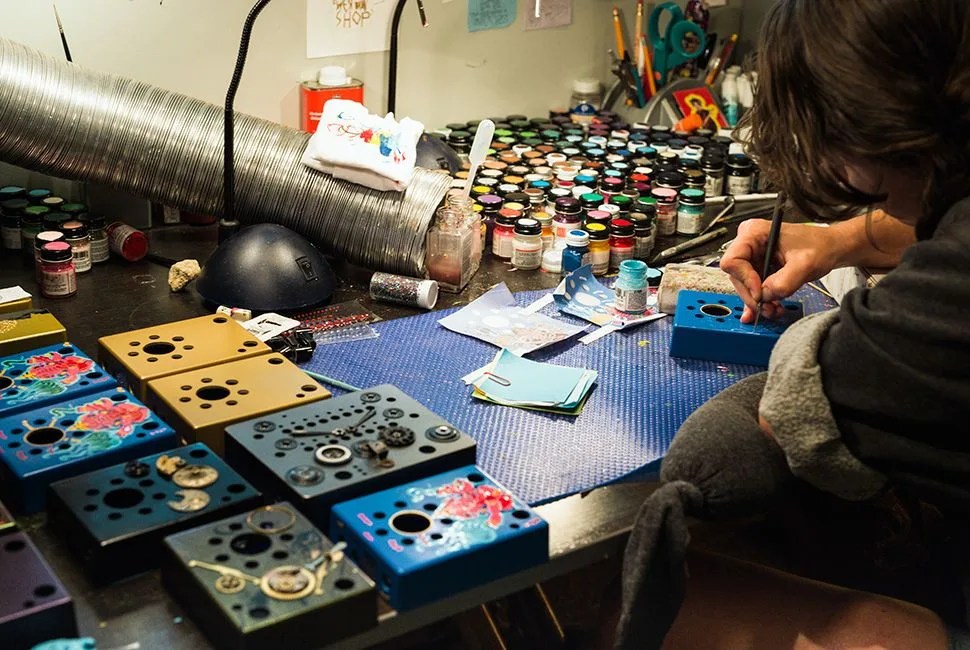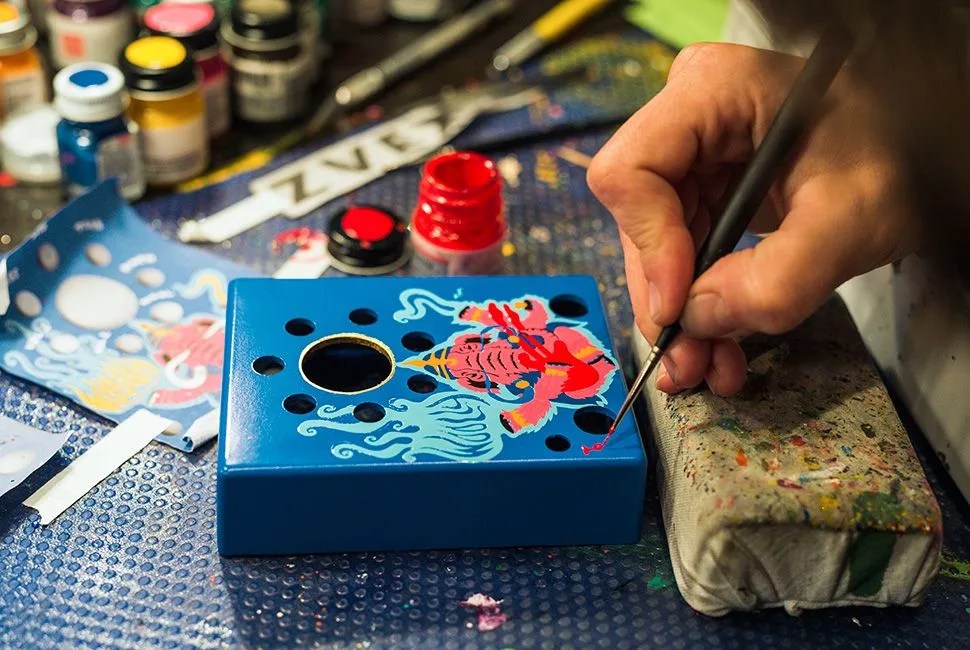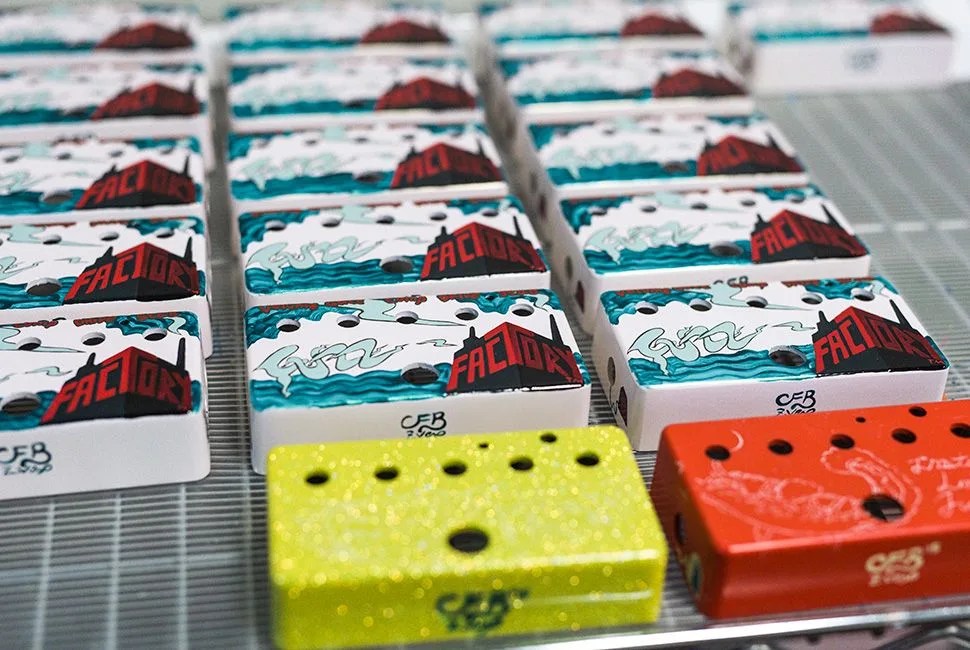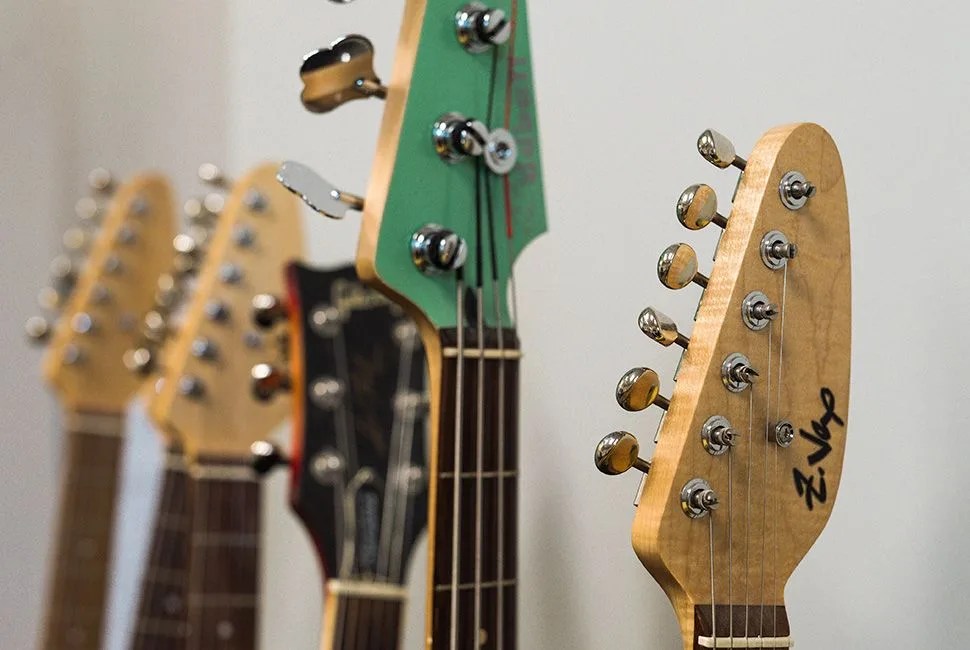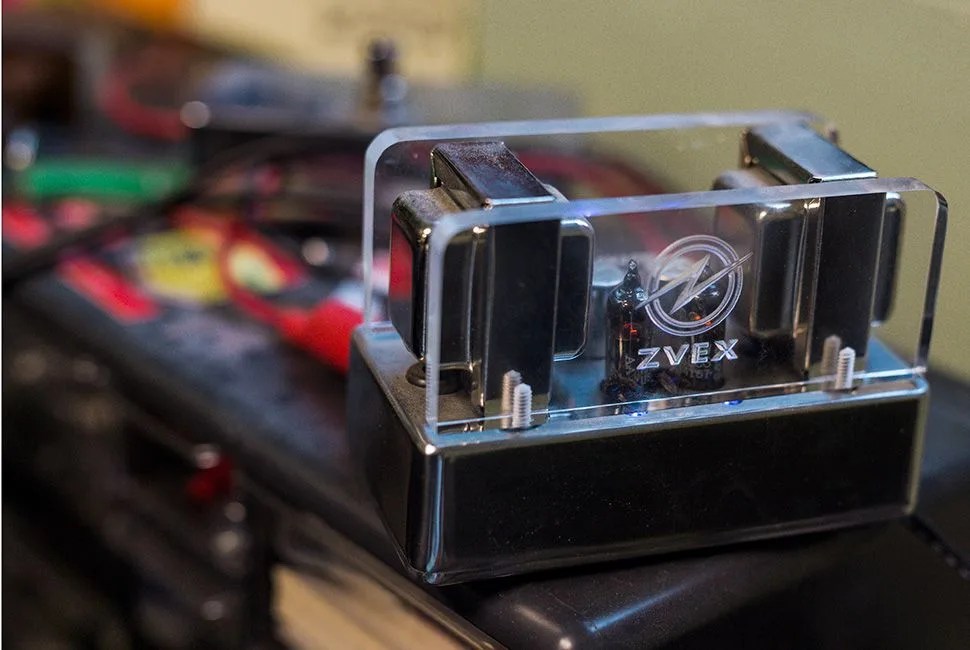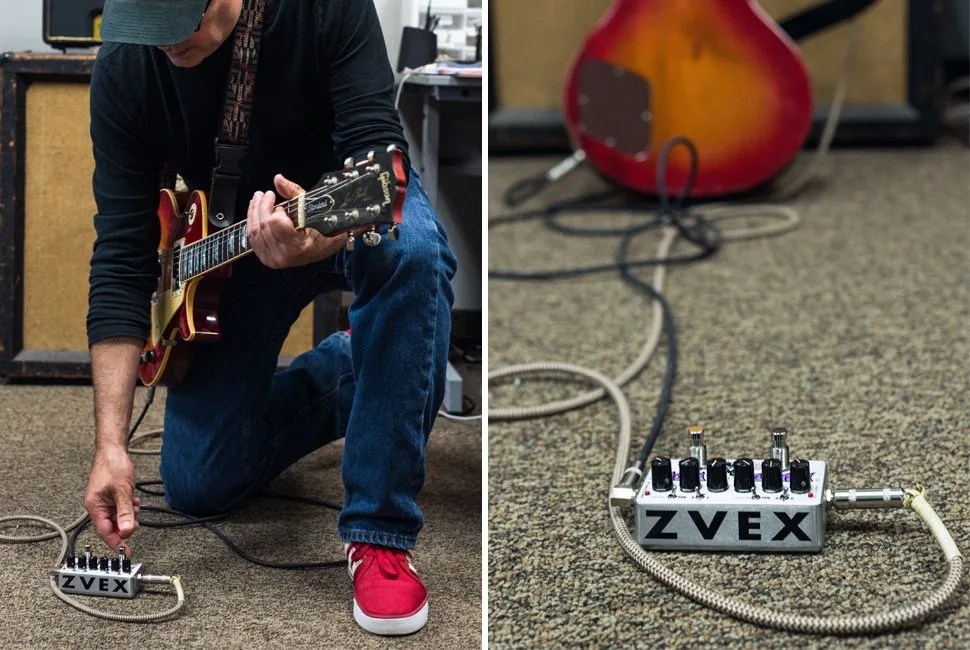13 photos
“When I was in second grade, my parents gave me one of those little kits you get for kids to learn about electricity,” Zack Vex explains as he leads me through his office in a suburban Minneapolis warehouse. “When you pressed the button it would complete the circuit and make a clicking sound, like a telegraph. I took it apart and studied it over and over and when I finally realized how electromagnets worked, it was an important moment for me.”
That is an understatement coming from a man known as the “mad scientist” of electric guitar effects. From that first electrical kit in second grade, Vex went on to more ambitious projects, rewiring anything he could get his hands on during his childhood while also showing enough musical prowess to become first-chair cellist in his high school orchestra. His interests converged in the 10th grade when he sold his first guitar fuzz box that he built out of some parts from Radio Shack housed in a small plastic tackle box. “I made less money on that one than I spent on parts for it,” Vex laughs.
After dropping out of an electrical engineering program in college (“I got bored with what they were teaching”), Vex started rewiring guitar amplifiers in his spare time. It was around this time that the Minneapolis music scene was exploding, led by the artist known then, and now once again, as Prince. Vex decided to take a chance and open his own recording studio while selling his own brand of guitar effects pedals on the side. His company, Z.Vex Effects, grew slowly but his reputation spread and his pedals, with their flexibility and signature sound, became sought after, with such musical luminaries like Billy Corgan, Jack White and Trent Reznor being among the Z.Vex faithful.
The most popular and famous Z.Vex product is the Fuzz Factory, an effects pedal that emulates much of the feedback and Fuzztone distortion that grew out of the late 1960s with guitarists like Jimi Hendrix. Vex plugs in a battered Gibson Les Paul to give a quick demo. Without an effects pedal at first, he cranks the volume and strums a few chords. The wall of sound is distorted and deafening. Next, Vex plugs the guitar into the pedal and then into the amplifier and turns the volume down. The same chords, this time hushed, maintain that fuzzy distortion so coveted by guitar heroes, real and aspiring, everywhere. “With this, now you can practice in the basement and not wake the house up,” Vex says like a man who knows from experience.
Soon his reputation spread and his pedals became sought after, with such musical luminaries like Billy Corgan, Jack White and Trent Reznor being among the Z.Vex faithful.
Aside from their signature sound and innovation, Z.Vex pedals are known for their appearance. Vex has two artists who paint the pedals by hand with wild designs and very rock-and-roll names, like the “Woolly Mammoth”, the “Box of Metal” and the “Super Hard-On.” On the painter’s workbench is one half-finished box case covered with small mechanical watch parts, to be a “steampunk” edition. In a display case in Vex’s office are various one-off pedals he has cobbled together over the years, including one made from an old revolver, one housed in a derelict SLR film camera and one shaped like a bat.
